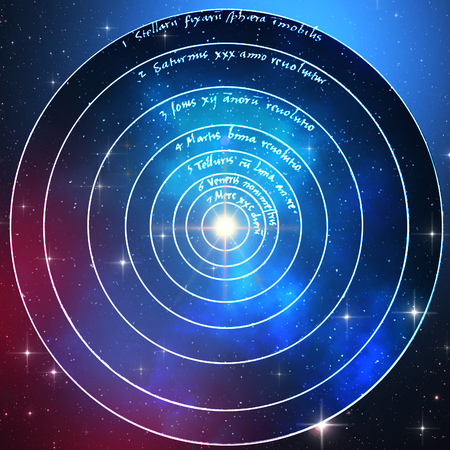Galaxies put on the scales at IAU Symposium in Potsdam
From 20 to 24 March, 150 participants from 25 countries worldwide meet in Potsdam for the IAU Symposium 379 “Dynamical Masses of Local Group Galaxies”. The focus of the conference is on determining the mass of galaxies in our cosmic neighbourhood.
What are the masses and sizes of galaxies in the local universe? This simple question is still unanswered. However, it has a significant impact on our understanding on the origin of galaxies, and more specifically the evolutionary history of our immediate cosmic neighbourhood, the Local Group – consisting of our home galaxy the Milky Way, the Andromeda Galaxy, and a plethora of smaller dwarf galaxies.
Measuring the mass of a galaxy is not straight forward and can result in controversial findings depending on the methods, assumptions, and available data. The IAU Symposium aims to pose and tackle these questions: the participants will discuss methods, observations, results, and future plans. Most people will physically attend the meeting at Potsdam’s Telegrafenberg, yet some 25 participants will join virtually.
Dr Marcel Pawlowski, scientific organizer of the conference, is looking forward to meeting colleagues from all over the world: “Over the last years, the research field has made major developments, particularly fuelled by new observational data from missions like the Gaia satellite. Now we can finally get together and discuss these results and their implications, and plan future projects.” At the Leibniz Institute for Astrophysics Potsdam (AIP), Marcel Pawlowski leads a Leibniz junior research group dedicated to the motion and distribution of satellite galaxies of our Milky Way and other galaxies. He adds: “It is particularly exciting to see that also many young colleagues, including PhD and Master students, will attend. This field of research is very active and gives me confidence that many new discoveries will be made in the years to come.”
For benefit of the general public, the organizers plan to record a series of public outreach videos during the meeting that will provide insights into the work and life of astronomers, giving advice to (prospective) students. Some of the visiting scientists will also explain their research.
Professor Maria-Rosa Cioni, local and scientific organizer of the conference and head of the research section Dwarf Galaxies and the Galactic Halo at AIP, states: “We are glad that both the IAU and DFG have provided funding to support the participation of a range of researchers.” Professor François Hammer (Observatoire de Paris - PSL), who is also a scientific organizer, emphasizes the importance of the meeting: “This Local Group Symposium will be the first aiming to decipher estimates of total galaxy masses, a great breakthrough in cosmology.”
The International Astronomical Union (IAU) promotes astronomy through international cooperation. To this end, it organizes numerous scientific conferences and calls nine international symposia each year. IAU Symposia, called the scientific flagship, are intended to significantly advance the field by seeking answers to current key questions and/or clarify emerging concepts.
From 20 to 24 March, 150 participants from 25 countries worldwide meet in Potsdam for the IAU Symposium 379 “Dynamical Masses of Local Group Galaxies”. The focus of the conference is on determining the mass of galaxies in our cosmic neighbourhood.
What are the masses and sizes of galaxies in the local universe? This simple question is still unanswered. However, it has a significant impact on our understanding on the origin of galaxies, and more specifically the evolutionary history of our immediate cosmic neighbourhood, the Local Group – consisting of our home galaxy the Milky Way, the Andromeda Galaxy, and a plethora of smaller dwarf galaxies.
Measuring the mass of a galaxy is not straight forward and can result in controversial findings depending on the methods, assumptions, and available data. The IAU Symposium aims to pose and tackle these questions: the participants will discuss methods, observations, results, and future plans. Most people will physically attend the meeting at Potsdam’s Telegrafenberg, yet some 25 participants will join virtually.
Dr Marcel Pawlowski, scientific organizer of the conference, is looking forward to meeting colleagues from all over the world: “Over the last years, the research field has made major developments, particularly fuelled by new observational data from missions like the Gaia satellite. Now we can finally get together and discuss these results and their implications, and plan future projects.” At the Leibniz Institute for Astrophysics Potsdam (AIP), Marcel Pawlowski leads a Leibniz junior research group dedicated to the motion and distribution of satellite galaxies of our Milky Way and other galaxies. He adds: “It is particularly exciting to see that also many young colleagues, including PhD and Master students, will attend. This field of research is very active and gives me confidence that many new discoveries will be made in the years to come.”
For benefit of the general public, the organizers plan to record a series of public outreach videos during the meeting that will provide insights into the work and life of astronomers, giving advice to (prospective) students. Some of the visiting scientists will also explain their research.
Professor Maria-Rosa Cioni, local and scientific organizer of the conference and head of the research section Dwarf Galaxies and the Galactic Halo at AIP, states: “We are glad that both the IAU and DFG have provided funding to support the participation of a range of researchers.” Professor François Hammer (Observatoire de Paris - PSL), who is also a scientific organizer, emphasizes the importance of the meeting: “This Local Group Symposium will be the first aiming to decipher estimates of total galaxy masses, a great breakthrough in cosmology.”
The International Astronomical Union (IAU) promotes astronomy through international cooperation. To this end, it organizes numerous scientific conferences and calls nine international symposia each year. IAU Symposia, called the scientific flagship, are intended to significantly advance the field by seeking answers to current key questions and/or clarify emerging concepts.
Images
Big screen size [1000 x 1413, 1.4 MB]
Original size [2481 x 3508, 7.0 MB]





